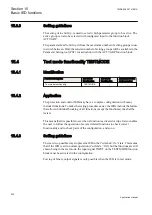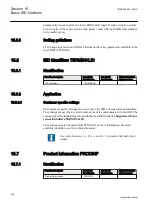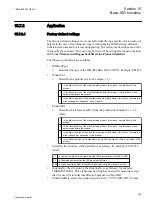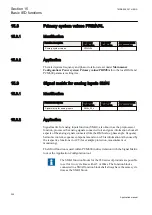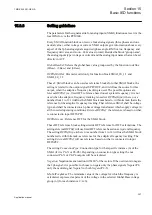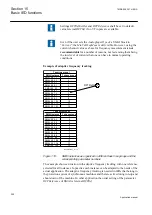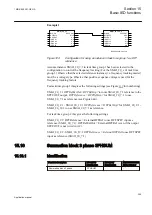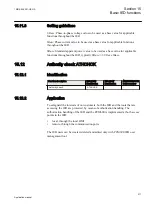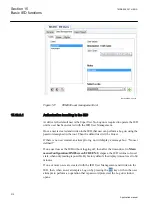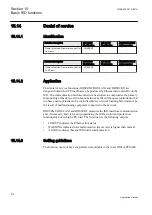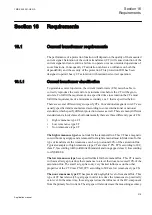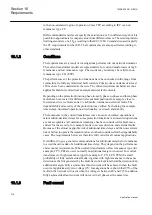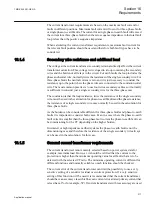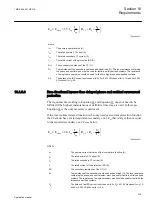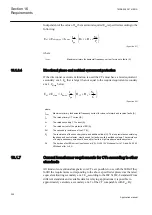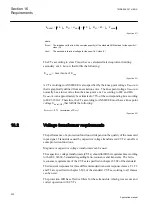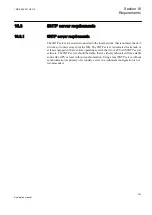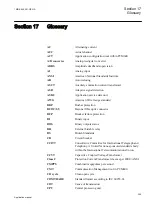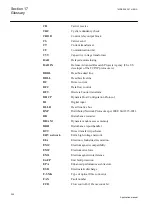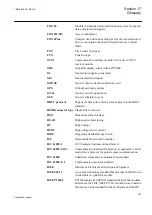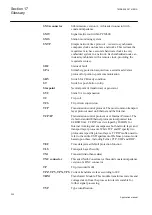
Section 16
Requirements
16.1
Current transformer requirements
The performance of a protection function will depend on the quality of the measured
current signal. Saturation of the current transformer (CT) will cause distortion of the
current signal and can result in a failure to operate or cause unwanted operations of
some functions. Consequently CT saturation can have an influence on both the
dependability and the security of the protection. This protection IED has been
designed to permit heavy CT saturation with maintained correct operation.
16.1.1
Current transformer classification
To guarantee correct operation, the current transformers (CTs) must be able to
correctly reproduce the current for a minimum time before the CT will begin to
saturate. To fulfill the requirement on a specified time to saturation the CTs must
fulfill the requirements of a minimum secondary e.m.f. that is specified below.
There are several different ways to specify CTs. Conventional magnetic core CTs are
usually specified and manufactured according to some international or national
standards, which specify different protection classes as well. There are many different
standards and a lot of classes but fundamentally there are three different types of CTs:
•
High remanence type CT
•
Low remanence type CT
•
Non remanence type CT
The high remanence type
has no limit for the remanent flux. This CT has a magnetic
core without any airgaps and a remanent flux might remain almost infinite time. In this
type of transformers the remanence can be up to around 80% of the saturation flux.
Typical examples of high remanence type CT are class P, PX, TPX according to IEC,
class P, X according to BS (old British Standard) and non gapped class C, K according
to ANSI/IEEE.
The low remanence type
has a specified limit for the remanent flux. This CT is made
with a small air gap to reduce the remanence to a level that does not exceed 10% of the
saturation flux. The small air gap has only very limited influences on the other
properties of the CT. Class PXR, TPY according to IEC are low remanence type CTs.
The non remanence type CT
has practically negligible level of remanent flux. This
type of CT has relatively big air gaps in order to reduce the remanence to practically
zero level. In the same time, these air gaps reduce the influence of the DC-component
from the primary fault current. The air gaps will also decrease the measuring accuracy
1MRK 505 291-UEN A
Section 16
Requirements
315
Application manual
Summary of Contents for Relion REQ650
Page 1: ...Relion 650 series Breaker protection REQ650 Application manual ...
Page 2: ......
Page 20: ...14 ...
Page 26: ...20 ...
Page 48: ...42 ...
Page 82: ...76 ...
Page 90: ...84 ...
Page 160: ...154 ...
Page 178: ...172 ...
Page 264: ...258 ...
Page 288: ...282 ...
Page 302: ...296 ...
Page 330: ...324 ...
Page 338: ...332 ...
Page 339: ...333 ...


